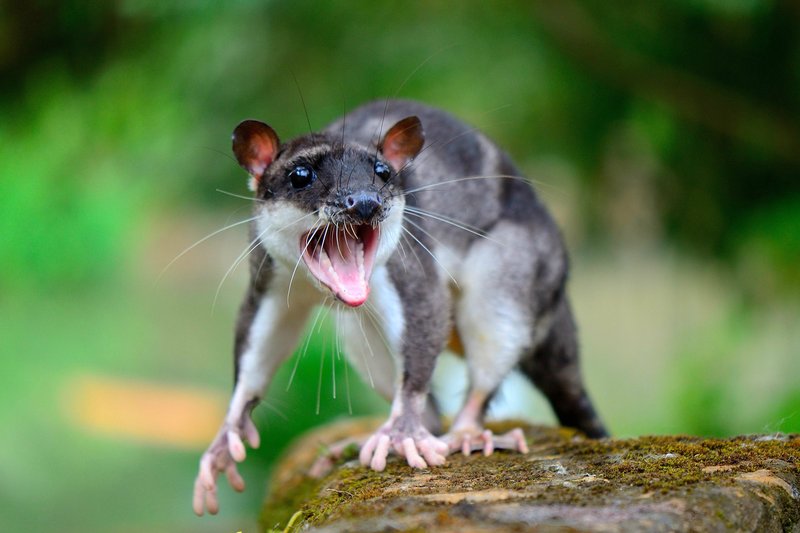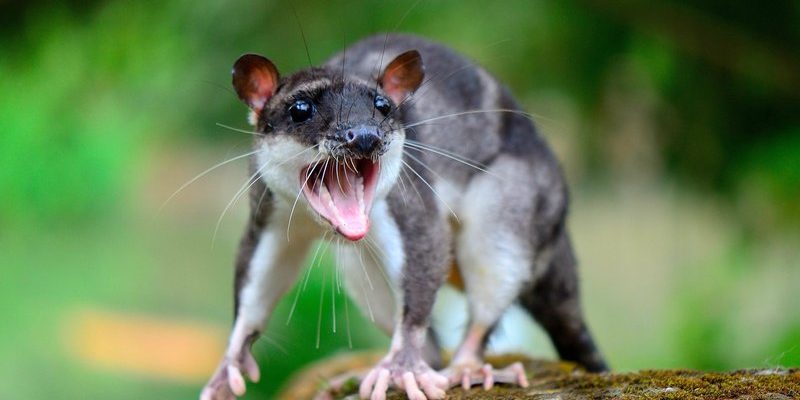
Have you ever heard of a creature that can literally walk on water? Meet the Yapok, also known as the water opossum. This little animal has some incredible adaptations that allow it to thrive in aquatic environments, making it one of nature’s most intriguing critters. Imagine a mix of an opossum with some unique tricks up its sleeve—this is the Yapok!
The Yapok is not just another marsupial; it’s a remarkable example of evolution at work. With its webbed feet and semi-aquatic lifestyle, this creature is perfectly designed for life in the water. If you’re curious about how it survives and what makes it so special, you’re in for a treat. Let’s dive in and explore the fascinating world of the Yapok together!
Taxonomy and Classification
The Yapok belongs to the family Didelphidae, which includes all opossums. It is scientifically classified as Chironectes minimus. This classification places it squarely in the marsupial category, sharing traits with its better-known relatives. But what sets it apart is its unique adaptations for life in and around water.
Interestingly, the Yapok is one of the few marsupials that is truly aquatic. While other opossums are known for their climbing and scavenging skills, the Yapok is a proficient swimmer. This makes it an exceptional case in the opossum family, showcasing the diversity of life within this group of animals.
Understanding its taxonomy helps us appreciate the Yapok’s role in its ecosystem. As a specialized species, it plays a vital part in maintaining the delicate balance of its habitat. Whether it’s foraging for food or avoiding predators, every aspect of the Yapok’s life is intertwined with its aquatic environment.
Physical Characteristics
The Yapok has a fascinating appearance that sets it apart from other marsupials. It typically measures about 30 to 40 cm in length, including its long, prehensile tail which can add an extra 25 cm. Its fur is dense and waterproof, which is crucial for its semi-aquatic lifestyle. Imagine how cozy a warm, waterproof coat feels when you’re splashing around in the water!
One of its most notable features is its webbed feet, which allow it to glide through water with ease. The webbing acts like a paddle, making it easier for the Yapok to swim swiftly while chasing prey or escaping danger. You could think of it as having built-in flippers! This adaptation is not just for show; it’s essential for survival in its watery habitats.
Additionally, the Yapok has large eyes and ears, giving it excellent night vision and hearing. This is especially useful when it’s foraging for food in murky waters. The Yapok often hunts during nighttime, using its keen senses to locate insects, fish, and crustaceans. With such an array of adaptations, it’s clear that the Yapok is well-equipped to thrive in its habitat.
Habitat and Distribution
The Yapok is primarily found in the tropical and subtropical regions of Central and South America. Its preferred habitats are freshwater environments, including rivers, streams, lakes, and marshes. You’ll often spot them in lush rainforests or near wetlands, where they can easily access both land and water.
These little creatures are particularly fond of areas with dense vegetation, as this provides cover from predators. Their habitat choice is essential because it offers not only a place to hide but also an abundant food supply. The Yapok’s ability to adapt to varying aquatic environments showcases its resilience in the face of changing ecological conditions.
However, deforestation and habitat destruction pose significant threats to the Yapok. As human activity encroaches on these natural habitats, the populations of these unique marsupials could decline. Conservation efforts are crucial to ensure that the Yapok continues to thrive in its natural environments.
Behavior and Lifestyle
The Yapok is known for its unique behaviors that revolve around its aquatic lifestyle. Unlike many marsupials, which are primarily terrestrial, the Yapok regularly swims in search of food. It uses its strong legs and webbed feet to propel itself through the water, displaying remarkable agility. Watching a Yapok swim is like watching a furry little torpedo darting through the reeds.
Socially, Yapoks are typically solitary creatures. They tend to establish their own territories, which they mark using scent. When it comes to reproduction, female Yapoks give birth to about four to six young after a gestation period of around 11 days. The tiny joeys then crawl into their mother’s pouch, where they continue to develop for several weeks. It’s a heartwarming sight—these little ones snuggled up, safe and sound, as they explore their watery world.
At night, Yapoks soar into action. They forage for food, using their keen senses to locate crustaceans and insects. When foraging, they are known to dive underwater, holding their breath for a few seconds to catch prey. This ability to adapt their behavior based on their surroundings is a fascinating aspect of their lifestyle.
Diet and Feeding Habits
The Yapok is a carnivorous creature, primarily feeding on a diet of small fish, crustaceans, and various aquatic insects. Imagine scuttling along the riverbank, spotting a crawfish, and swooping down to catch it—this is the Yapok in action. Its sharp teeth are well-adapted to grasp and tear its prey, ensuring it gets the nutrition it needs to thrive in its environment.
In addition to aquatic life, the Yapok occasionally forages for fruits and plants that grow near water sources. This omnivorous diet allows it to be flexible based on food availability. It’s like being at a buffet with a diverse menu; the Yapok can pick and choose what’s best for it at the moment!
This incredible adaptability in diet helps the Yapok survive in its habitat. By taking advantage of both aquatic resources and terrestrial food, it ensures that it can find something to eat regardless of the season. This flexibility is key to thriving in an ever-changing environment.
Conservation Status
The conservation status of the Yapok is a topic of concern for environmentalists and wildlife enthusiasts alike. Due to habitat destruction, pollution, and climate change, the Yapok faces numerous threats. Their populations are considered vulnerable, especially in regions where wetlands are being drained or polluted.
Several organizations are working tirelessly to protect the Yapok and its habitat. Conservation efforts focus on restoring wetlands, preserving water quality, and educating local communities about the importance of this unique marsupial. It’s like rallying a team to protect a special treasure that’s worth saving.
By raising awareness about the Yapok’s plight, we can contribute to its conservation. Supporting local wildlife initiatives and advocating for the protection of natural habitats can make a significant difference in ensuring the future of these remarkable creatures. After all, preserving biodiversity is essential for maintaining the balance of our ecosystems.
Interesting Facts About the Yapok
- The Yapok can hold its breath for up to 30 seconds while diving underwater.
- Its fur is made of a special structure that keeps it dry while swimming, similar to a waterproof jacket.
- The Yapok is also known to glide short distances from tree branches, showcasing its versatility.
- It is primarily nocturnal, which means it’s most active at night.
Table of Yapok Facts
| Common Name: | Yapok |
| Scientific Name: | Chironectes minimus |
| Size: | 30-40 cm (including tail) |
| Habitat: | Freshwater rivers, lakes, wetlands |
| Diet: | Small fish, crustaceans, aquatic insects |
| Life Span: | 4-5 years in the wild |
| Conservation Status: | Vulnerable |
FAQ
What is a Yapok?
The Yapok, also known as the water opossum, is a semi-aquatic marsupial found in Central and South America. It is known for its swimming abilities and unique adaptations that allow it to thrive in freshwater habitats.
Where can I find Yapoks?
You can find Yapoks in tropical and subtropical regions, primarily near freshwater rivers, lakes, and wetlands. They tend to inhabit areas with dense vegetation, which provides both food sources and protection from predators.
What do Yapoks eat?
The Yapok has a carnivorous diet, feeding mainly on small fish, crustaceans, and aquatic insects. It also occasionally consumes fruits and plants that grow near water sources, showcasing its adaptability in diet.
How do Yapoks swim?
Yapoks are excellent swimmers due to their webbed feet and strong limbs. They use their feet much like paddles, propelling themselves swiftly through water while foraging for food or evading predators.
Are Yapoks endangered?
The Yapok is considered vulnerable due to threats such as habitat destruction, pollution, and climate change. Conservation efforts are underway to protect their habitats and raise awareness about their importance in the ecosystem.
How do Yapoks reproduce?
Female Yapoks carry their young in a pouch after a gestation period of about 11 days. They typically give birth to four to six joeys, which continue to develop in the pouch for several weeks before becoming independent.
What adaptations do Yapoks have for their environment?
Yapoks have several adaptations for their aquatic lifestyle, including waterproof fur, webbed feet, and keen senses for hunting at night. These features enable them to thrive in their semi-aquatic habitats.
Can you keep a Yapok as a pet?
Keeping a Yapok as a pet is not advisable. They are wild animals with specific needs that are best met in their natural habitat. Additionally, they are protected by laws in many areas, making it illegal to own one.
How long do Yapoks live?
In the wild, Yapoks typically live for about 4 to 5 years. However, in captivity with proper care, they may live longer. Their lifespan can be influenced by factors such as diet and environment.

